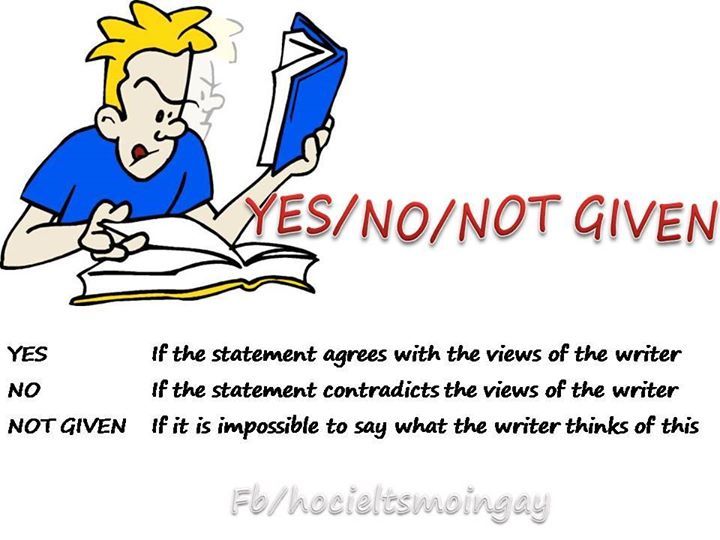
How to Do Yes No Not Given Questions in IELTS Reading?
Be Careful About Instructions
You should read the instructions well whether it is in the form of code Y/N/NG or words Yes/No/Not Given. Many students commit silly mistakes that they forget about the instruction and start answering the statements blindly without even reading instructions well. Some students even answer these questions by writing true false though these are yes no questions. So, always make sure about the instructions you are given and answer your questions accordingly.
Identify the Opinions from Passage
The biggest essential tip to consider for solving yes no not given questions is that you should be extra careful about the opinions given in the IELTS reading passage. Opinions are not directly given in the passage. You should be able to determine what the author wants to convey through his statements. You may think of it as something hidden in the sentences or something secret that you have to discover by reading the passage.
Now, you should first underline the keywords in the question statements and then, with the help of those keywords, you can find out the appropriate paragraph in the passage which relates to the question statement. Once you find the paragraph, you can then read it intensely to locate the right statement in the paragraph which refers to your question statement.
Now, you can read that statement and try to interpret its meaning. Keyword matching helps you to find the appropriate paragraph but you can find answer only by interpreting the meaning of the statement or by identifying the opinion of author such as whether he agrees or disagrees on a particular topic.
Notice Controlling Words in Statements
There are some controlling words that you should be careful about while solving yes no not given questions. For example, every time, never, some, always, ever, a little, a few etc. are some of the words that can change the meaning of a statement completely. These questions are likely to be no type of questions but can also be yes or not given questions. The thing is you should read the statements carefully when you find these controlling words.
Practice YNNG question type here: YES-NO-NOT GIVEN exercises (mini-ielts.com)




